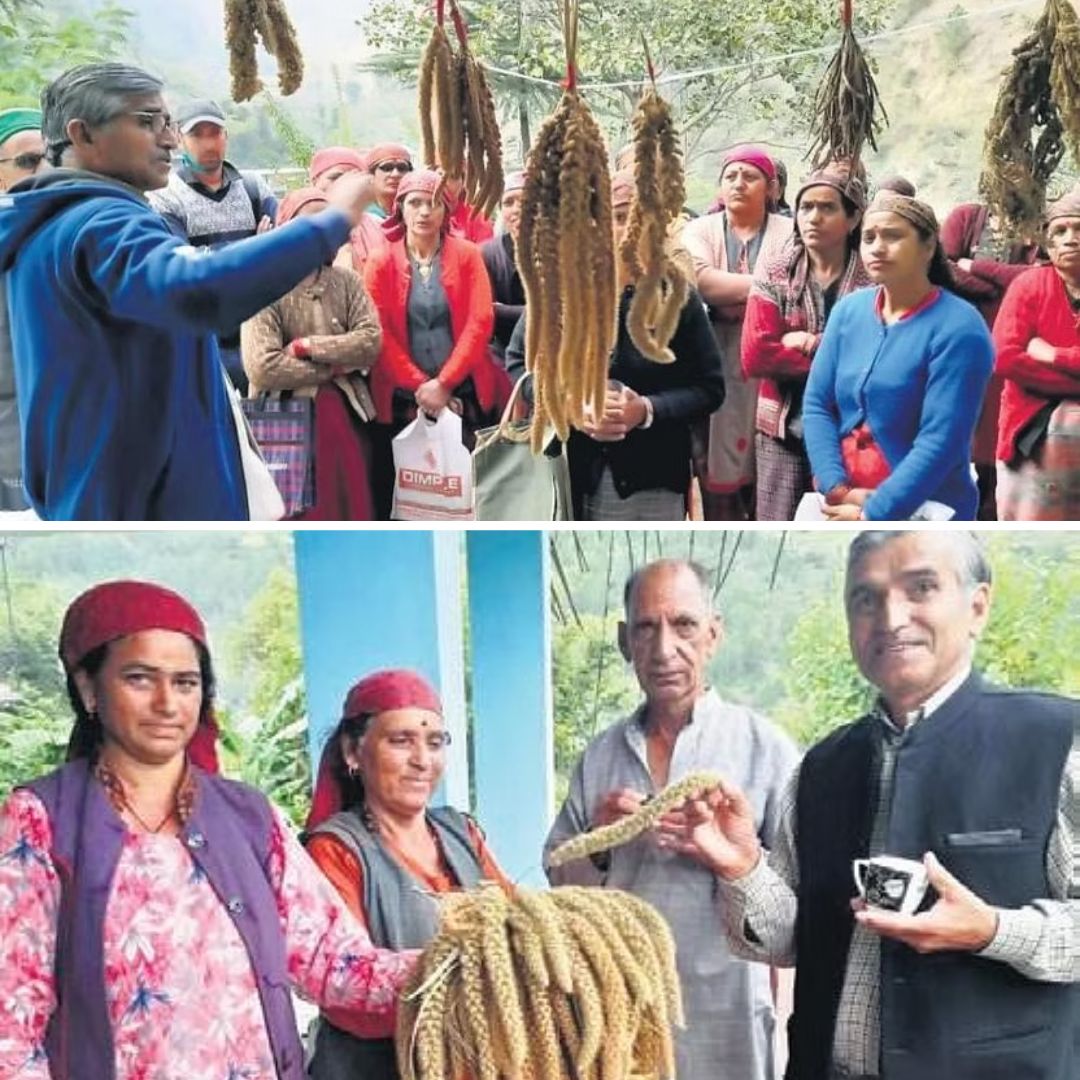
Image Credit- The New Indian Express
Meet This 59-Year-Old Farmer From Himachal Who Is Preserving Traditional Style Of Farming, Indigenous Seeds
Writer: Shiva Chaudhary
A post-graduate in Journalism and Mass Communication with relevant skills, specialising in content editing & writing. I believe in the precise dissemination of information based on facts to the public.
Himachal Pradesh, 24 Oct 2022 7:33 AM GMT
Editor : Snehadri Sarkar |
While he is a massive sports fanatic, his interest also lies in mainstream news and nitpicking trending and less talked about everyday issues.
Creatives : Shiva Chaudhary
A post-graduate in Journalism and Mass Communication with relevant skills, specialising in content editing & writing. I believe in the precise dissemination of information based on facts to the public.
Villagers fondly refer to Nekram Sharma as a 'saviour' of indigenous seeds as he has adopted the Nau-anaj practice, an intercropping method in which nine food grains are farmed on the same piece of land.
Nekram Sharma, a farmer from Nanj village in the Karsog valley of the Mandi district of Himachal Pradesh, was rejected from government employment in 1984. Following the rejection, he started cultivating fruits and vegetables at his family's 22 bighas unused land and experimented with organic farming. Later, he entirely switched to ancient farming techniques as his only way of agriculture.
What began as an alternate vocation became a full-time occupation that led to conserving almost three dozen indigenous varieties of seeds. Villagers fondly refer to him as a 'saviour' of indigenous seeds as he has adopted Nau-anaj (Nau is 9 and Anaj is crop) practice, an intercropping method in which nine food grains are farmed on the same piece of land.
What Is Nau-Anaj Practice?
Under the practice, Sharma grows nine crops which are a combination of cereals, creepers, lentils, legumes, and vegetables from the indigenous seeds passed on to him by his elders. He cultivates beans, buckwheat, foxtail millet, maize, moong, amaranthus rajma, and urad dal.
He says in a year, a person can grow 18 crops (9 Kharif) and (9 Rabi), and it has multiple benefits as it increases the fertility level of the soil but consumes less water with zero input costs, reported The New Indian Express.
Since 2002, Sharma has worked on preserving the traditional style of agriculture and has managed to produce indigenous seeds of all local varieties for the coming generations. There are about 20 indigenous seeds, including eight millet types, and three wheat varieties, besides encouraging intercropping systems.
Preserving Traditional Style Of Agriculture
The 59-year-old farmer recalls that he was 25-year-old when a public movement to save forests was started. He says that his elders whined that the indigenous seeds are slowly disappearing from the market, which made him think. He researched and realized that these seeds had more nutritional properties than what was available and used by all the farmers.
Later he started collecting and sowing these seeds in his fields but was constantly called mad and taunted by other farmers for saving trees and indigenous seeds. However, he was supported by some of his friends.
Revival Of Indigenous Seeds With Its Health Benefits
With backing from his friends, Sharma approached experts to connect the resurrection of the indigenous seeds with its health benefits besides good yields under adverse conditions.
Several panchayat meetings were spent on making the farmers understand the value and benefits of these seeds. Now, he also has an indigenous seed bank through which he preserves and distributes the seeds to the farmers.
Also Read: Supreme Court Modifies Sentence Of Convict In Rape-Cum-Murder Case To 20-Year Of Jail Term
 All section
All section














